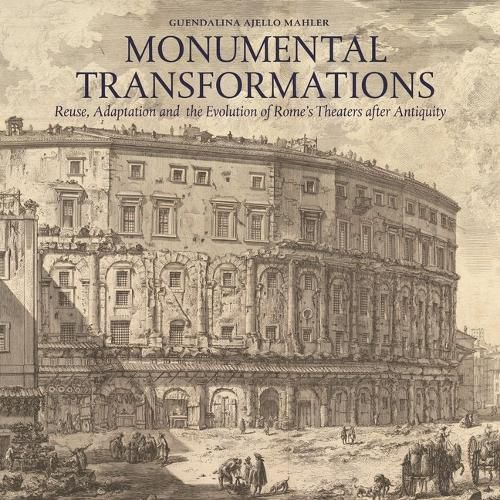Readings Newsletter
Become a Readings Member to make your shopping experience even easier.
Sign in or sign up for free!
You’re not far away from qualifying for FREE standard shipping within Australia
You’ve qualified for FREE standard shipping within Australia
The cart is loading…






This book is an exploration of the layers of Rome: the accumulations of centuries of habitation that make the city a fascinating and sometimes confounding palimpsest. This architectural coexistence is perhaps most nakedly on display at the sites of the ancient theaters of Marcellus and Pompey. Here ancient, medieval, early modern and contemporary elements are interwoven in a way that produced some of the strangest buildings in Rome. Drawing on archival sources, pictorial records and physical evidence, this book untangles the rich history and fabric of these buildings. It starts to trace their evolution from the fall of the Roman empire, when the city’s public monuments were taken over by private owners and the theaters were first used as simple shelters. It follows the theaters as they were taken over by powerful Roman families in the middle ages, and transformed into fortresses which dominated the urban landscape. And it examines the structures’ continued evolution, as defensive needs were replaced by the desire for more elaborate living spaces, and eventually the requirements of the formal aristocratic palace. This last transformation posed the greatest challenge for the buildings and the families that inhabited them. The Tuscan palace was a highly desirable model but in many ways was incompatible with the massive, radial theater remains. The choices made by the owners in response to this problem are in many ways surprising, and shed light on overlooked aspects of patronage and palace-building. Eschewing badly needed formal improvements, the families focused primarily on enhencing the experiential aspects of their palaces. Their approach shared by some of their contemporaries, pointing to a plurality of practices in the conception of the palace. This book offers an alternative perspective on Rome’s ancient remains: a material history which enriches our understanding of Rome and its antiquities, and illuminates aspects of baronial patronage, social identity, and even the palace itself.
$9.00 standard shipping within Australia
FREE standard shipping within Australia for orders over $100.00
Express & International shipping calculated at checkout
This book is an exploration of the layers of Rome: the accumulations of centuries of habitation that make the city a fascinating and sometimes confounding palimpsest. This architectural coexistence is perhaps most nakedly on display at the sites of the ancient theaters of Marcellus and Pompey. Here ancient, medieval, early modern and contemporary elements are interwoven in a way that produced some of the strangest buildings in Rome. Drawing on archival sources, pictorial records and physical evidence, this book untangles the rich history and fabric of these buildings. It starts to trace their evolution from the fall of the Roman empire, when the city’s public monuments were taken over by private owners and the theaters were first used as simple shelters. It follows the theaters as they were taken over by powerful Roman families in the middle ages, and transformed into fortresses which dominated the urban landscape. And it examines the structures’ continued evolution, as defensive needs were replaced by the desire for more elaborate living spaces, and eventually the requirements of the formal aristocratic palace. This last transformation posed the greatest challenge for the buildings and the families that inhabited them. The Tuscan palace was a highly desirable model but in many ways was incompatible with the massive, radial theater remains. The choices made by the owners in response to this problem are in many ways surprising, and shed light on overlooked aspects of patronage and palace-building. Eschewing badly needed formal improvements, the families focused primarily on enhencing the experiential aspects of their palaces. Their approach shared by some of their contemporaries, pointing to a plurality of practices in the conception of the palace. This book offers an alternative perspective on Rome’s ancient remains: a material history which enriches our understanding of Rome and its antiquities, and illuminates aspects of baronial patronage, social identity, and even the palace itself.